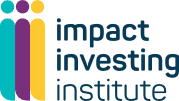
PFC is a family office founded in 2016 by a branch of the Marzotto Family, which has been at the heart of Italy’s textile industry since the 1800s. Headquartered in Milan, Italy, PFC aims to create a world of social and environmental justice for all – with the ambition to be a point of reference in Europe for investing for positive social and environmental impact.
Guglielmo Notarbartolo di Villarosa (‘Gullo’) is Head of Private Equities and Support to the CEO at PFC. His sister Giorgiana (‘Gio’) is Head of Philanthropy and Lead of Investing for Impact, manages her own impact portfolio and founded the 2030 Social Impact Prize to support entrepreneurs aiming to address inequality issues in Europe.
Where did your family’s impact journey begin?
Gullo: Strictly speaking, our social impact journey goes all the way back to the 19th century when our great-great grandfather Vittorio Emanuele made big efforts to modernise textile production and improve social welfare for employees. In the early 20th century, our great grandfather Gaetano was involved in founding various welfare entities such as retirement homes, childcare services and social holiday services, which were formalised into a foundation, the Fondazione Marzotto, in 1959. That foundation is still operating today, employing around 400 full-time employees and supporting around 2000 people a year.
However, our shift from pure philanthropy to an impact investment approach started when our branch of the family formed the PFC Family Office in 2016 and has gathered pace ever since.
What was the impetus for considering impact investment?
Gio: For me, the impetus came in 2015 when, in a conversation with the European Investment Fund, I was exposed to the concept of social finance and it made immediate sense to me. Prior to that point, I had pretended my wealth was not there and that it was something that I had no interest in growing. But by 2015, I had my MBA from INSEAD, and once I discovered impact investing, I decided that was what I wanted to do with my wealth.
It was the possibility of greater impact together that moved me away from the idea of simply taking my share and managing it independently. Greater impact not just because I could influence other family members, but because we could potentially influence other family offices too. So, after spending a year in the field studying impact investing, I started “evangelising” as Gullo used to call it.
Gullo: I had started working in our financial holding alongside in 2014 my grandfather, who had all the power and took all the decisions, so it was very tough! Initially, I did not have the energy to focus on creating positive social or environmental impact. But after a few years, the fact I was doing something that was not aligned with my values made me pause. Gio’s advocacy on shifting to impact began to resonate. I started pushing for a shift in our investment strategy, at which point Gio and I became great allies.
How did you secure buy-in from the rest of the family?
Gio: It took time! Although I had discovered impact investing in August 2015, I only felt ready to talk to the rest of my family about it at the end of 2016. At our annual family meeting, I gave a presentation on impact investing and linked it back to what our great-grandfather had done in the social welfare space. As an invitation, I finished my talk with the African saying “If you want to walk fast, walk alone. If you want to walk far, walk together”. And the general response from the rest of the family was “Sure – you go ahead!”.
So, I took up the challenge and pulled out a chunk of my wealth to create a relatively small portfolio of listed equity with an ESG filter and a thematic approach. At the next year’s family meeting, I showed the performance results of this portfolio and that it had comparable or better returns than a non-ESG approach. At which point other family members agreed that applying an ESG filter to the family investment portfolio may be a good thing – and that was the first step.
What was the process for moving into a more impact-led approach?
Gio: When my grandfather retired in in 2018, Gullo took the lead of the family office, supported by other family members. That same year, Gullo and I started work on developing a family constitution to align the need to preserve and grow the family’s wealth with the need to have a positive impact.
In 2017/18, I also started approaching family members with a set of cards created by Tribe Investment Management detailing the 17 UN Sustainable Development Goals. I asked each family member which goals were most important to them, and which goals they would like to invest in, and which they would like to make grants for. That opened up much more specific conversations around what impact we wanted to have as a family and how to acknowledge different family member preferences.
As a result of these discussions, we were able to land on a thematic approach prioritising education, energy, food & agriculture, health, and housing & green buildings. We formalised the constitution in 2020. This was followed by a review of our investment strategy and the draw of our first-ever investment policy statement (IPS) in 2021.
More recently, we have also started developing a Theory of Change, which maps our objectives and priorities against our impact goals. That, in turn, has allowed us to determine how our grant-giving should be allocated against our objectives. So, for example, we have initially determined that 60% of our philanthropic portfolio should be allocated towards fostering an equitable economic system, 30% towards fostering a respectful relationship with nature, and 10% towards opportunistic grants not covered by the other two themes (for example related to family historical grant-making, individual preferences and more innovative approaches). The most important thing, however, is that in totality we are led by impact and focused on system change.
How has all this been reflected in the make-up of the investment portfolio?
Gio: The portfolio originally taken on by the family office was about 98% invested in listed equities. That has evolved over time and now comprises about 66% listed equity, 25% private equity and 3% real assets, reflecting our belief that private equity offers the most effective way to drive impact. And those allocations will no doubt continue to evolve. We also have targets for how much we aim to have invested in each of our thematic areas, such as energy healthcare and education, and how much we aim to allocate across each area of the Spectrum of Capital. Our 2030 target asset allocation will have 55% of our Gross Asset Value in alternatives -Private Equity and Real Assets- and 45% in Capital Markets.
How have you managed to keep employees on board with this approach?
Gullo: I have personally made all the hirings at the family office so I have made sure each person understands our company culture from the very beginning and is willing to liberate themselves from the traditional investment paradigm.
I also quickly learned that the impact of an Investment Policy Statement is directly proportionate to the level of consciousness of those who write it and those who deploy it and execute it. So, one of the most effective things we have done is to define a programme of consciousness evolution.
That includes a mindfulness session in the office every Wednesday. There are many highly sophisticated financial professionals in the family office – so it has sometimes been awkward! But it is exactly what we needed.
We are also moving to a four-day week in January 2024 to give people space away from the rat race to get clarity and understanding around our purpose.
We also have bi-monthly cineforum where the team gets to watch documentaries such as ‘Capital in the 21st Century’ and discuss socially and environmentally relevant topics. So we have put in a lot of effort to break down the separation between the personal and the professional within our team, and let the whole human-being come into play when deploying this capital.
So how do you interact with capital markets and talk to external asset managers about impact? And what kind of reception are you getting?
Gullo: We try to be as inclusive as possible. For example, I share a lot about the ‘Spectrum of Capital’ principle, which tends to get a positive response because it is not alienating. We say to managers: “We are at this point on the spectrum – where do you see yourselves? Are you a traditional investor? Are you responsible? Or are you sustainable? Here are some tools to help you go forward in this spectrum if you wish.”
We have also created the first Italian ‘Investing for Impact’ masterclass, a three-day course that we run each year for fund managers and other family offices. More personally, Gio and I spend a lot of time talking with fund managers and wealth owners to understand why they are doing what they are doing and how we can help. We often witness younger generations trying to please their fathers and grandfathers with KPIs that are solely about financial return. So that is another very intimate conversation that we often have with individuals.
Finally, we are in the process of launching a website and a social media programme to advocate a different way of managing wealth.

What are the investments that have typified your approach – and what are the kind of things you don’t do anymore?
Gullo: One investment that we recently rejected is a company that breeds mice to test life-saving treatments. We realised that, if we invested, we could have improved the treatments of the animals, but we would have also been validating a model that is blocking the evolution of testing using AI and machine learning, which can create infinite testing scenarios and save hundreds of thousands animals per year. So, we decided not to invest – even though it was a great investment financially.
A recent investment that typifies our investment approach is A Wilderness Way, a UK-based company that helps children who have experienced trauma or abuse to get physical and mental rehabilitation. It is a very solid business with strong cashflows and partnerships with the UK government. We believe we can return two to three times net capital, with a buyout risk profile. So even a traditional, non-impact investor would want to invest.
Do you have any holdings where you have been pushing for change as a shareholder?
Gullo: A very good example is a legacy family holding, Hugo Boss, where we are the relative majority shareholders, alongside another family branch, and hold two seats on the board.
Fashion is one of the most polluting industries in the world, so we have been talking about sustainability with the company for a long time. Given that fashion is now one of our ‘no go’ investment sectors, it would be easy simply to sell our shares. But Hugo Boss generates EUR 4 billion in revenue, so we know that any positive change we can help to deliver could also inspire other major industry players. So although it has been a hard decision to keep the company in our portfolio, it is driven by broader, systemic thinking.
Gio: Another example, is using our Amazon shares to co-file a shareholder resolution to reduce plastic usage. We are fully aware that we are still operating in a system where there are capital markets and where there are monopolies. So, it is a constant jigsaw puzzle deciding where and how we can attribute impact correctly.
What could help more individuals like you to be empowered to invest for impact?
Gio: At the beginning of my journey, I felt really, really lonely, partly because as a society we do not talk about money. Enabling people in a position of privilege and wealth to talk about that – and understand and acknowledge their starting point – is the first step. Everything around taxation and the structure of capital markets also needs to be addressed. If we want to change the system, we need to change the structure.
Gullo: The market also needs to incentivise traditional investors and fund managers to apply their skills in the impact space. For example, in Italy, when you invest directly into a company, you pay 1.3% tax on profits whereas if you invest in a fund, you pay 27% tax. We are therefore advocating for Article 9 funds [those classified under the EU’s Sustainable Finance Disclosures Regulation as having a clearly-defined sustainable investment objective], to be taxed like direct investments. This would allow fund managers that are generating a consistent impact to have a relative advantage. That is the kind of economic device that investors really respond to.
What could help more individuals like you to be empowered to invest for impact?
Gio: We are in constant change and growing as an entity at the same time as understanding how we can have an impact using our wealth across the whole spectrum of capital. We have granted about EUR 1 million over the past decade. Now we are at the point of discussing allocating 100% of our profits to philanthropy, using an approach that seeks to shift the system and address root causes, rather than more traditional conceptions of charitable giving. I would also ultimately like to eliminate capital growth as one of our fiduciary duties as a family office. But I recognise that we are still evolving – so let us see!
